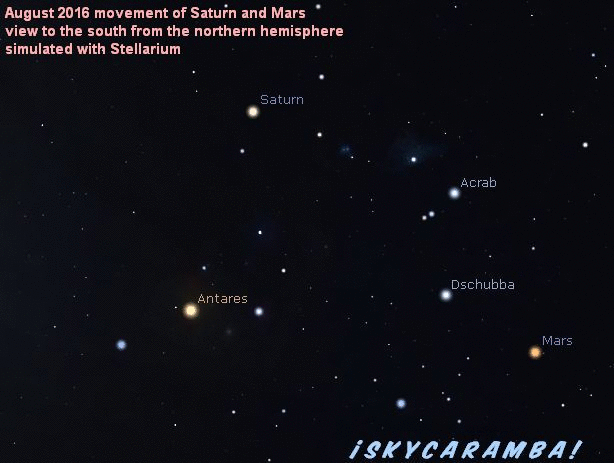There’s something unusual about this month. None of the naked eye planets are visible in the morning. Two of them will be hard to spot in the evening. Look west just after sunset. Venus is barely above the horizon. Jupiter is above it and to the left. Between them but closer to Venus you can find Mercury. You’ll probably need binoculars to see it with the glow of the dusk still behind it. A thin crescent moon passes Mercury on the 4th and Jupiter on the 5th to help you.
Venus and Mercury stay very close to the horizon just after sunset all month. But they’ll be in slightly different positions each night. Jupiter seems to sink to join them toward the middle of the month. Later sunsets for northern hemisphere viewers helps keep them in sight. Jupiter will be very close to Venus on the 27th. The two will be just 0.1° apart.
Mercury is actually at greatest elongation 27.4° from the sun on the 16th. But its angle from the sun makes it not particularly good for viewing from middle and high northern latitudes. Southern hemisphere sky watchers have it good though.
Saturn and Mars are in the south at sunset. Saturn is the one on the left, and as the month begins it is above Antares. Mars is moving toward its rival star of old and passes 2° north of it on the 24th. This is a great time to compare their colors and understand why the ancient Greeks saw them as rivals. Saturn is 4° north of Mars at the end of the month.

The moon occults Jupiter on the 6th at 3:30 UT. That’s visible from French Polynesia.
The moon passes in front of Aldebaran on the 25th at 16:44. That occultation is visible from the Marianas and Micronesia.
When the moon is full on the 18th, try to see the penumbral eclipse. It may appear slightly fainter from most of the Americas, the Pacific, Australia, and most of Asia. Some penumbral eclipses discolor the moon slightly.
Mercury is at aphelion on the 15th. It is 0.47 astronomical units from the sun.
The Perseids meteor shower peak is August 11 to 12. The best viewing is after midnight. You could see up to 60 meteors per hour caused by the earth’s atmosphere sweeping into dust left behind by Comet Swift-Tuttle.
